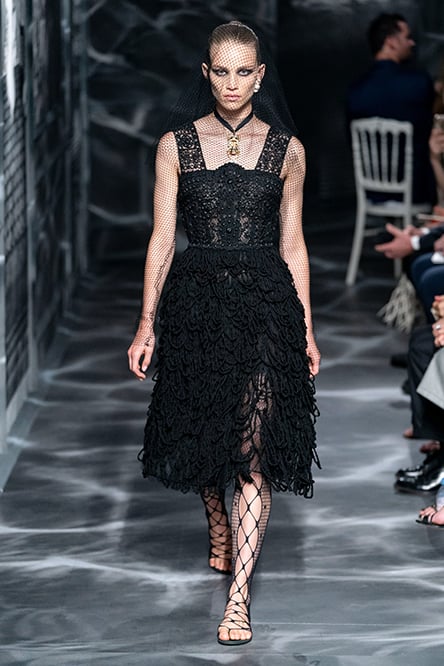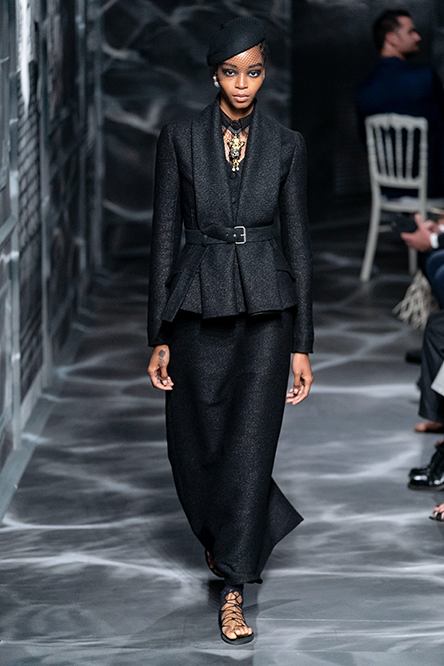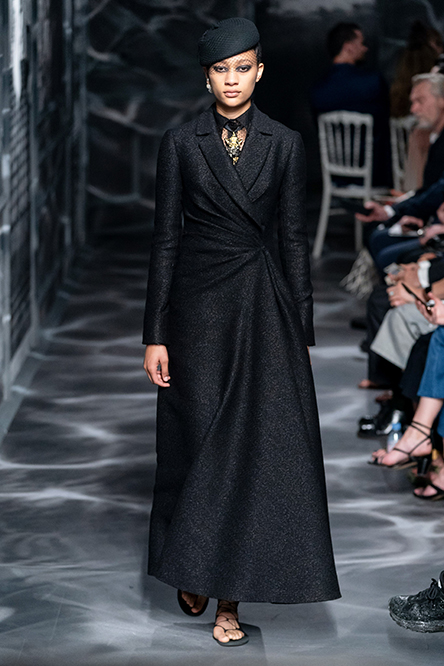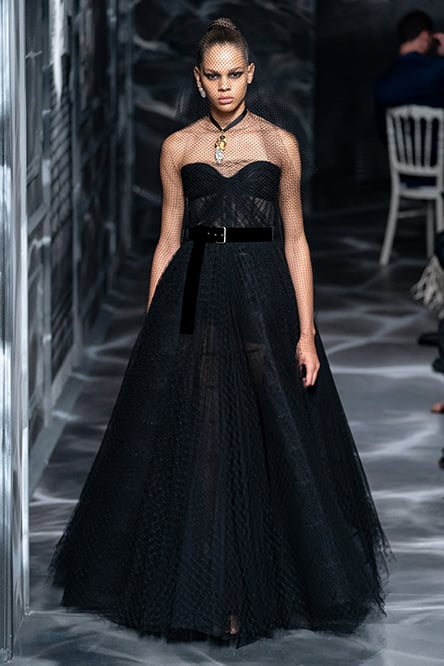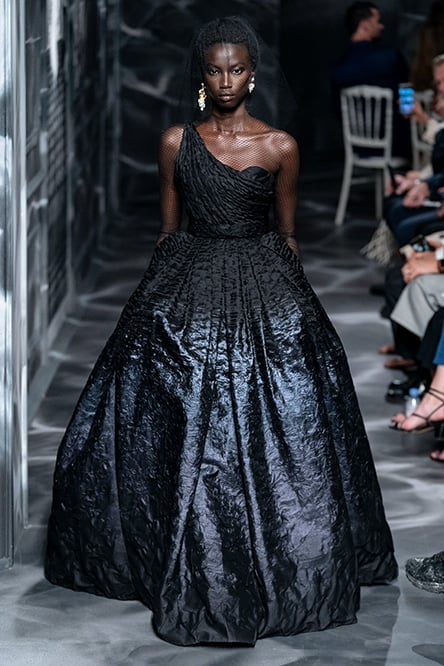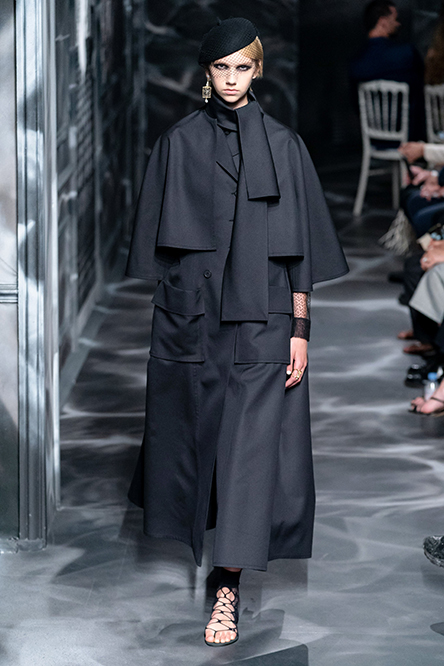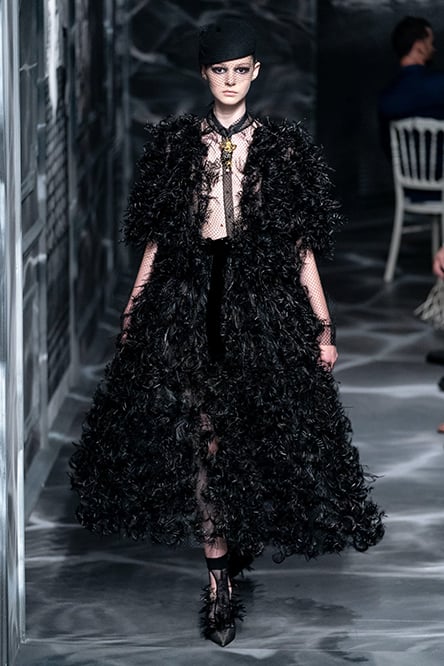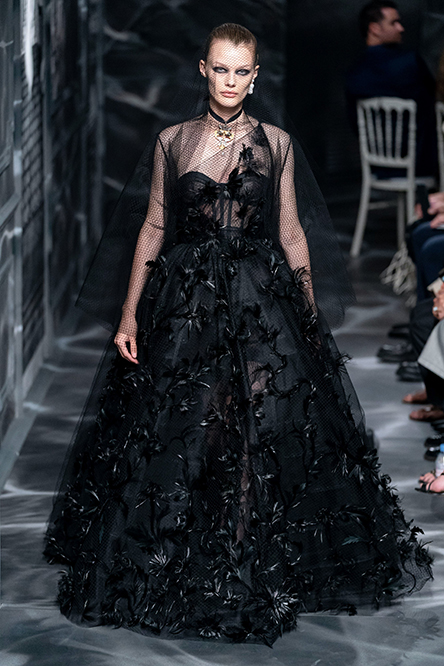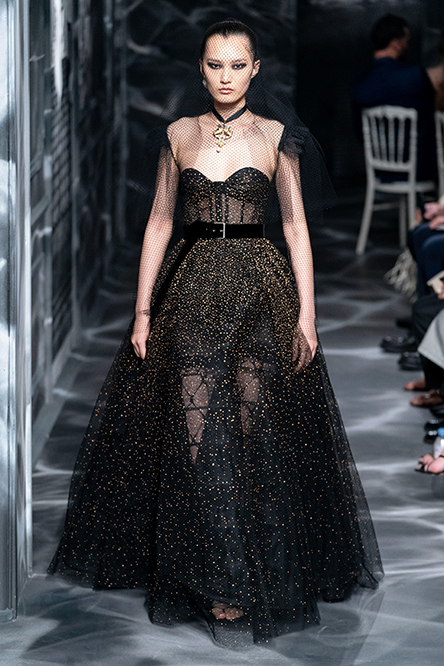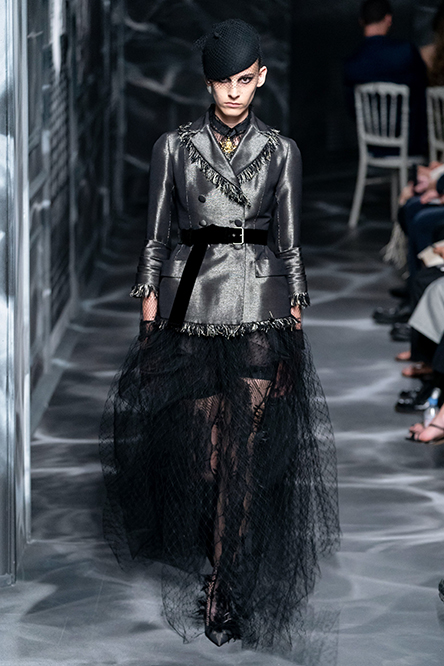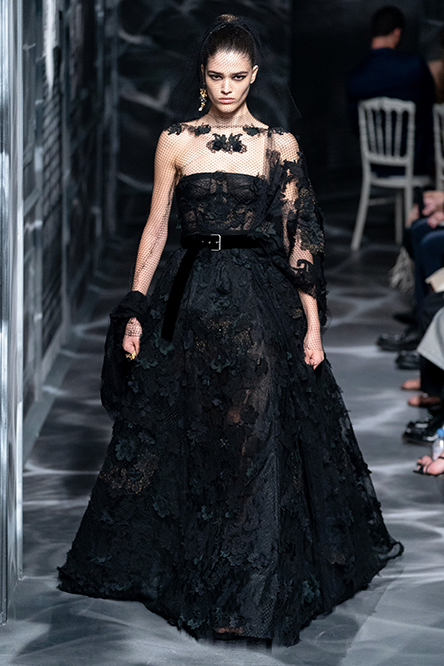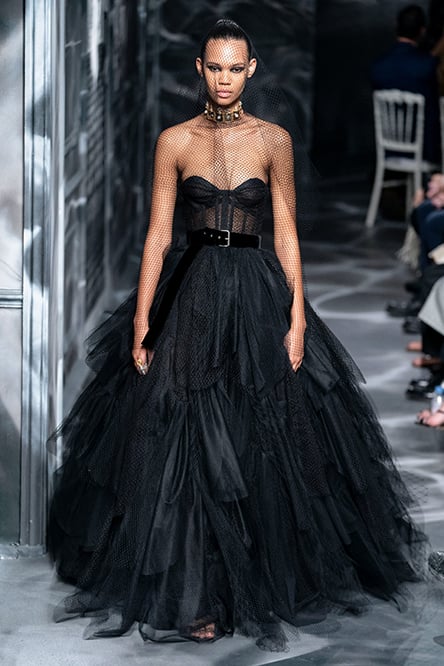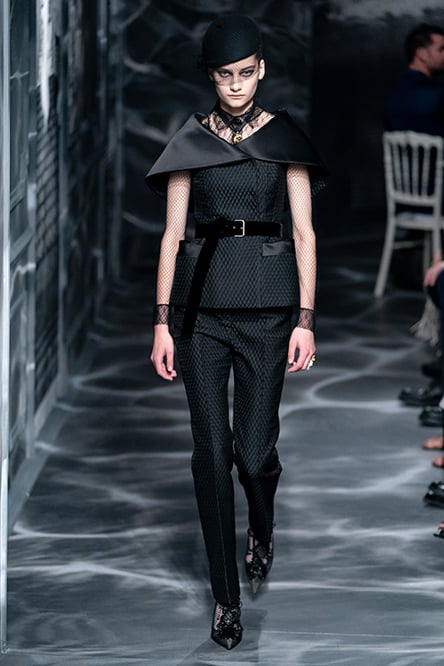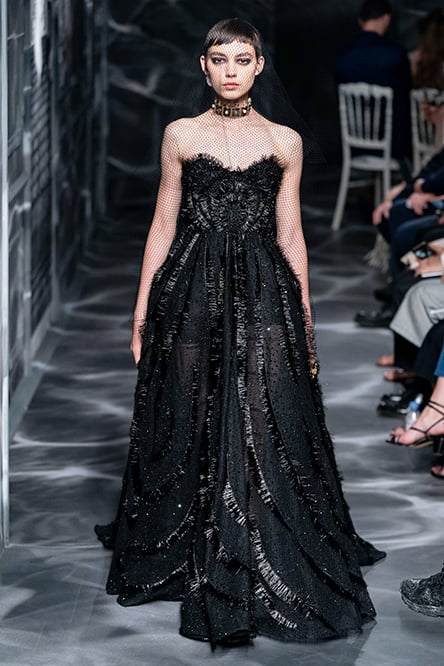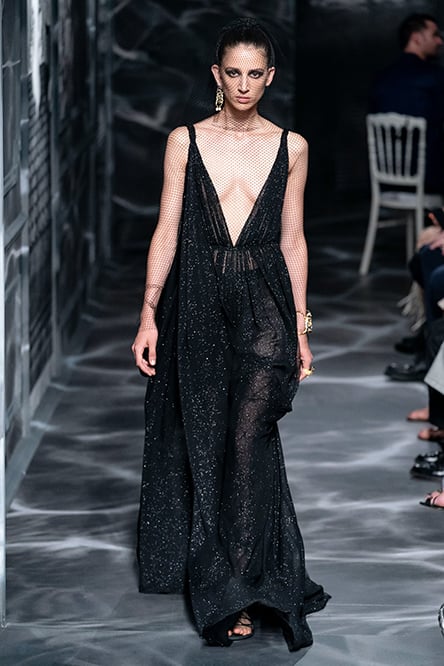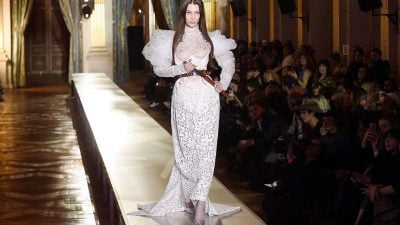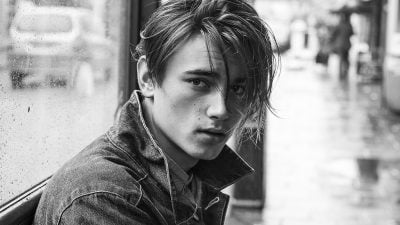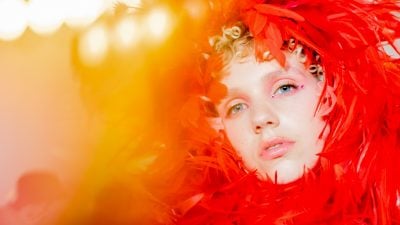
“I could write a book about black,” Christian Dior once declared, and it’s this sentiment that opened the doors for Maria Grazia Chuiri’s dark Victorian heroines at the Fall 2019 Haute Couture shows in Paris. Since joining the house of Dior as creative director in 2016, Chiuri has mined the archives and curated collections that represent the history and heritage of the famed French house, referencing not only the work of Christian Dior himself, but drawing from the work of each creative predecessor. In addition to preserving Dior’s heritage, she has also worked to make the brand more relatable to the modern woman, a task best accomplished by a woman. The proof is in the numbers. Dior has experienced a growth in sales in part due to the guidance of its first female creative director.
Maria Grazia Chiuri’s Fall 2019 couture collection felt very much like a personal statement from the creative director herself. The models wore a variation of Chiuri’s own signature black smokey eye, and the entire collection save for a handful of looks were completely black. Overall the collection fell into two categories. There were plenty of Chiuri’s exquisite light as air tulle dresses reworked with lace and netting, displaying the architecture of their structure. On the other hand, the remainder of the collection consisted of heavy coat dresses with many of the silhouettes appearing distinctly retro chronicling Dior’s golden era. For a collection so heavily reliant on vintage shapes and heritage, it seemed to pose the obvious question: “Are clothes modern?” In an essay by Bernard Rudofsky, that question literally opened the show, printed on the front of a white Romanesque t-shirt dress. Chiuri implies that the answer maybe be contradictory. On one hand, couture is all about history and the preservation of treasured time honored hand sewn techniques. On the other, couture and fashion as a whole is always moving forward, always representing what is new and cutting edge. Yet, as Rudofsky’s essay reveals, people don’t always want to wear things that make sense in the modern world. The ballgown, for instance, doesn’t necessarily reflect modern values of efficiency, practicality, and functionality. Chiuri is walking a fine line with this collection, admitting that some things are valued simply for their beauty, and not because they makes sense. Chiuri is also clearly making adjustments to reflect what she believes is important to modern women. For example, Chiuri has modified the heavily corseted structure of the Dior ballgown with light boning and fabric sculpting rather than relying on severe body constriction to create the extreme feminine shapes Dior is known for.
The most unusual detail of the collection was a gladiator style sandal that was pared down almost to a minimal fishnet flip-flop, albeit very, very delicate, intricately beaded and feathered like lace fishnet. The effect felt a little out of place and unpractical (despite the fact that they seemed to be a rebuttal to the impracticality of high heels) when paired with heavy winter dresses, though in some cases they struck a much more pleasing note with a tattoo-embroidered bodysuit worn beneath a split tulle ballgown skirt. Later in the collection these sandals morphed into kitten heeled mesh pumps, which were really quite darling and felt like a fair compromise between fashion and function.
Is Dior Modern?
The gauzy gowns and sculptural jackets were extraordinary, but it would have been lovely to see more modern separates, like the babydoll fringe dress worn with pencil cut trousers, a likely reference to Raf Simons’ truncated ballgown top from his first show at Dior. A standout piece was a spaghetti strap V-neck top with a dramatically jutting neckline and sculptural hips styled over a skirt with scalloped leather hanging over layers of mesh. The top could have easily carried a simpler ensemble on its own and would have felt more relevant. Beautifully constructed voluminous jackets were paired over even more voluminous long skirts, but a nice alternative would’ve been perhaps a more minimal silhouette on the bottom, since most women tend to avoid wearing so much volume in one look. And then again, if we pay attention to what Maria Grazia Chiuri likes to wear herself, perhaps a full look of volume is modern after all. Creating a collection almost entirely in black, reveals its power, and the foundations of haute couture, bringing them face to face with today’s modern day lifestyles.
See All the Looks from the Collection



